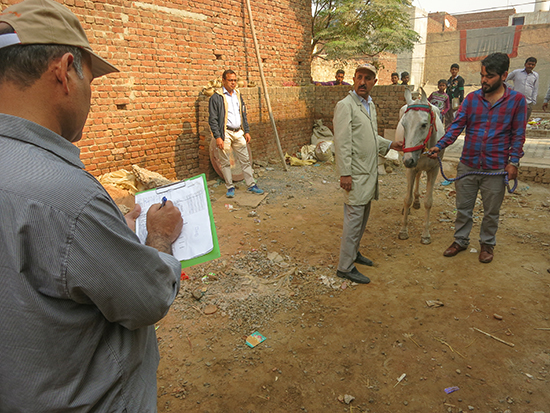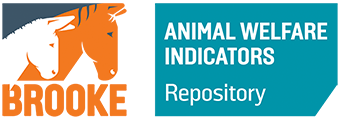Equine welfare
OIE Terrestrial Animal Health Code – Welfare of Working Equids.
The management and welfare of working animals: identifying problems, seeking solutions and anticipating the future.
(Article in Revue scientifique et technique (International Office of Epizootics))
Environmental and demographic risk factors for poor welfare in working horses, donkeys and mules in developing countries.
(Article in The Veterinary Journal)
Improving the welfare of working equine animals in developing countries.
(Article in Applied Animal Behaviour Science)
Equine Welfare.
(Textbook)

Welfare assessment at Brooke
Brooke’s approach to welfare assessment.
Guidance on interpreting results from animal welfare indicators.
Participatory welfare assessment by villagers in Senegal.
Using welfare assessment to guide welfare improvement.
Learning from use of SEBWAT.
A standardised equine-based welfare assessment tool used for six years in low and middle income countries.
(Article in PLOS One)
Assessment of the welfare of working horses, mules and donkeys, using health and behaviour parameters.
(Article in Preventative Veterinary Medicine)
Guidance on interpreting results from animal welfare indicators.
Participatory welfare assessment by villagers in Senegal.
Using welfare assessment to guide welfare improvement.
Learning from use of SEBWAT.
A standardised equine-based welfare assessment tool used for six years in low and middle income countries.
(Article in PLOS One)
Assessment of the welfare of working horses, mules and donkeys, using health and behaviour parameters.
(Article in Preventative Veterinary Medicine)
"Continuous learning is essential to remain updated with new developments which assist welfare assessors to accurately measure and map the changes brought about by programme activities in the welfare of working equids.”
Dr Hayatullah Hayat, Veterinary Officer, DCA, Afghanistan
